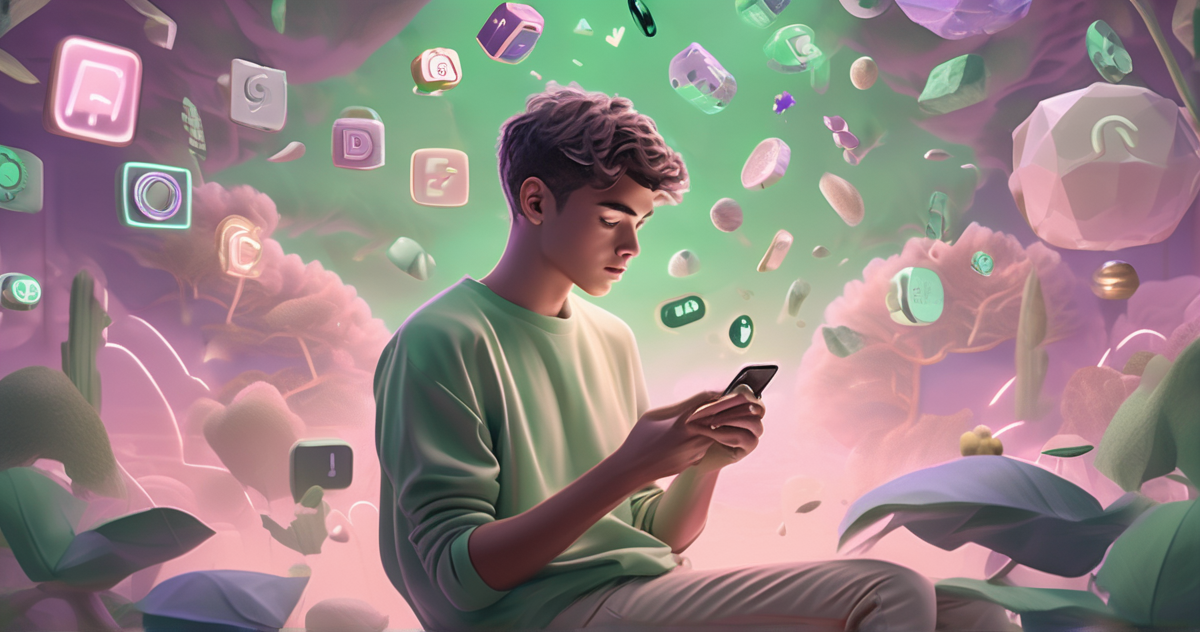The Amazing Ride of Mobile Gaming: From Snake to…Whatever’s Next
Okay, so mobile gaming. It’s, like, a huge thing, right? But it wasn’t always this way. I mean, think back – way back – to when the only game on your phone was probably Snake. Remember that pixelated masterpiece? Yeah. Things have…sort of changed since then. We’re talking about billions of dollars, hyper-realistic graphics, and entire esports leagues built around games you can play on your commute. It’s kind of wild when you actually stop and think about it. This article? It’s gonna try to, you know, actually stop and think about it. How did we get here? Where are we going? And, maybe more importantly, are there any hidden gems I should be downloading right now?
Early Days: Snake and the Dawn of Portable Fun
Seriously, Snake. You can’t talk about mobile gaming without giving a nod to that glorious, simple, battery-draining game. It was everywhere. Nokia phones were basically synonymous with Snake. And that’s because it was…well, it was fun! But beyond the cultural impact, Snake showed the potential of mobile devices for gaming. It proved people wanted to play games on the go. It didn’t need fancy graphics or complex controls. It just needed to be… engaging. That’s a lesson that still resonates today. How to begin replicating that success? Make it simple, make it addictive. That’s the magic formula, honestly. But what people often get wrong is overcomplicating things later on. They add features nobody asked for and, boom, the magic’s gone.
But things couldn’t stay pixelated forever, could they? The mid-2000s saw the rise of Java games. Remember those? They were a step up in terms of graphics and gameplay, offering stuff like platformers, racing games, even rudimentary RPGs. This is where companies started to actually see a real market. They saw money, basically. Common tools at the time for making these games were… well, pretty basic. Think simple SDKs and limited processing power. Getting smooth animations or complex AI was a real challenge. Small wins back then? Just getting a game to run without crashing was a victory. Where it got tricky? Monetization. Figuring out how to actually make money from these games was still very much a work in progress. Ever wonder why those early games were often…kinda clunky? It’s because the technology was still catching up to the ideas.
Speaking of ideas, what people often forget is the cultural context. We were still in the era of dedicated handheld consoles – Game Boys, PSPs, etc. Mobile games were seen as, maybe, a fun distraction, but not a serious gaming platform. That perception needed to shift. It needed a bigger push. And that push? Well, it was coming.
The App Store Revolution: iOS and Android Change Everything
The launch of the iPhone in 2007 and the Android platform soon after? That’s the big one. That’s the inflection point. The App Store model changed everything. Suddenly, developers had a direct line to millions of potential players. The barrier to entry was lowered significantly. Before, you needed a publisher, distribution deals… a whole mess of stuff. Now? You could develop a game in your bedroom and, potentially, reach a global audience. That’s kind of insane when you think about it. How to begin? Learn the new tools! iOS and Android development became hot skills overnight. Common tools? Xcode for iOS, Android Studio for Android. The game engines like Unity and Unreal Engine started becoming increasingly popular because they let you build for multiple platforms.
What people got wrong early on? Trying to port console games directly to mobile. It just didn’t work. Touch controls are different. Screen sizes are different. Play sessions are different. Mobile games needed to be designed from the ground up for mobile. Where it gets tricky? Discovery. With millions of apps in the app stores, how do you get your game noticed? That’s still the million-dollar question. Small wins that build momentum? Positive reviews. Word-of-mouth. Getting featured by Apple or Google. Those early wins can make or break a game. Examples? Think about games like Angry Birds or Candy Crush Saga. They weren’t graphical powerhouses. They were simple, addictive, and perfectly suited to mobile.
To be fair, the rise of free-to-play (F2P) games also played a massive role. The idea? Give the game away for free, then monetize through in-app purchases. It’s… a controversial model, honestly. Some people love it, some people hate it. But it’s undeniably been a huge driver of growth in the mobile gaming market. Ever wonder why so many mobile games feel…grindy? It’s because they’re designed to nudge you towards those in-app purchases. So, yeah…that kind of backfired in some ways. It’s a challenge to find the balance between making money and making a fun game.
The Rise of Mobile Esports and Competitive Gaming
Okay, let’s jump forward a bit. Mobile gaming isn’t just Candy Crush and Angry Birds anymore. It’s serious business. We’re talking esports. We’re talking tournaments with massive prize pools. Games like PUBG Mobile, Call of Duty: Mobile, and Mobile Legends: Bang Bang have huge competitive scenes. People are making a living playing these games. It’s a whole different world. How to begin? Well, if you’re looking to *play* competitively, practice, practice, practice. Join a team. Climb the leaderboards. If you’re looking to *organize* esports events… that’s a whole other ballgame. Common tools? Streaming platforms like Twitch and YouTube. Tournament management software. A solid internet connection.
What people get wrong? Underestimating the skill level. These players are good. Really good. It’s not just mashing buttons on a phone. It’s strategy, teamwork, reflexes… everything you’d expect from traditional esports. Where it gets tricky? Fair play. Cheating is a problem in any competitive scene, and mobile esports is no different. Developing robust anti-cheat measures is crucial. Small wins that build momentum? Successful tournaments. Growing viewership. Securing sponsorships. All that stuff validates the scene and helps it grow. Think about it – some of these tournaments have viewership numbers that rival traditional sports events. That’s a huge deal.
Actually, you know what’s interesting? The hardware is catching up to the demand. Gaming phones with high refresh rate screens, powerful processors, and dedicated cooling systems are becoming more common. That’s driving the competitive scene forward, too. It sort of creates a virtuous cycle – better hardware, better games, more competitive players, more viewers, more money… you get the idea. This is where I think the future of mobile gaming is really interesting, and we’ll touch on that later.
What’s Next? The Future of Mobile Gaming
So, where do we go from here? Honestly, it’s hard to say for sure. But there are definitely some trends to watch. Cloud gaming is a big one. The ability to stream high-end games to your mobile device without needing powerful hardware? That’s a potential game-changer – no pun intended. How to begin exploring cloud gaming? Sign up for services like Xbox Cloud Gaming or GeForce Now. Common tools? A fast internet connection. A compatible device. A controller might help, too. What people get wrong? Expecting it to be a perfect experience right away. Cloud gaming is still relatively new, and there are definitely some latency issues and other kinks to work out. Where it gets tricky? Infrastructure. Cloud gaming relies on having data centers close to players to minimize lag. That’s a big investment.
Small wins that build momentum? Smooth gameplay. A growing library of games. Positive user reviews. If cloud gaming can deliver on its promise, it could make mobile gaming even more accessible and powerful. Another trend? Augmented Reality (AR) and Virtual Reality (VR). Imagine playing a game that overlays onto the real world, like Pokémon Go but with even more depth and interactivity. Or diving into a fully immersive VR experience on your phone. The potential is huge, but the technology still has some hurdles to overcome. What are the hurdles? Well, AR needs better headsets. VR on mobile still suffers from limitations in processing power and battery life. But these are challenges that are being actively worked on.
And then there’s the games themselves. We’re seeing more and more console-quality games being ported to mobile, and more original mobile games pushing the boundaries of what’s possible. The lines between mobile, console, and PC gaming are becoming increasingly blurred. This means, probably, we’ll see games with cross-platform play, allowing people to play with their friends no matter what device they’re using. Which is, frankly, a good thing. It’s about accessibility, community, and, at the end of the day, having fun.
Quick Takeaways
- Mobile gaming’s come a long way from Snake, and it’s still evolving fast.
- The App Store model democratized game development – anyone can potentially make a hit.
- Free-to-play can be a double-edged sword: fun vs. monetization needs balance.
- Mobile esports is a real thing, with serious players and big prizes.
- Cloud gaming has the potential to bring console-quality games to mobile.
- AR and VR are interesting, but still have some technical kinks to iron out.
- The future of mobile gaming is likely cross-platform and more immersive.
Conclusion
So, yeah, mobile gaming. It’s been quite the journey, right? From pixelated snakes to hyper-realistic battle royales, it’s a story of innovation, adaptation, and a whole lot of people wanting to have fun on the go. What’s worth remembering here? Probably the core principle that started it all: simple, engaging gameplay. It’s easy to get caught up in the fancy graphics and complex features, but at the end of the day, a good game is a good game, no matter the platform. And you know what? I learned the hard way that chasing trends blindly doesn’t work. Focus on the fun, the quality, the experience. The rest…sort of falls into place.
Honestly, thinking about the future of mobile gaming is exciting. Cloud gaming, AR, VR… they all have the potential to take things to a whole new level. But even without those technologies, mobile gaming is already a vibrant and diverse market. There’s something for everyone, whether you’re a casual player looking for a quick distraction or a hardcore gamer looking for a competitive challenge. And that, I think, is pretty cool.
FAQs
What are some good free mobile games to play right now?
There are tons of great free mobile games out there, but some popular choices include Call of Duty: Mobile, Genshin Impact, and Mobile Legends: Bang Bang. It really depends on what kind of games you like – there are puzzle games, strategy games, action games, and everything in between.
How can I get started developing my own mobile game?
If you’re interested in mobile game development, a good starting point is learning a game engine like Unity or Unreal Engine. There are also many online tutorials and courses available that can teach you the basics of game programming and design, so you don’t have to go it alone.
Are mobile esports as competitive as PC or console esports?
Yes, mobile esports are incredibly competitive! Games like PUBG Mobile and Call of Duty: Mobile have thriving esports scenes with professional players and large prize pools. The skill level is very high, and these players train just as hard as their counterparts on PC and console.
Will cloud gaming replace traditional mobile gaming downloads?
It’s unlikely that cloud gaming will completely replace downloads, but it definitely has the potential to become a major player in the mobile gaming space. It offers the advantage of playing high-end games on lower-powered devices, but it also relies on a stable internet connection, so there are pros and cons.
What are the most important things to consider when designing a mobile game?
When designing a mobile game, it’s crucial to consider things like touch controls, short play sessions, and the overall user experience on a small screen. You also need to think about monetization strategies and how to keep players engaged over the long term, which can be a real challenge.










